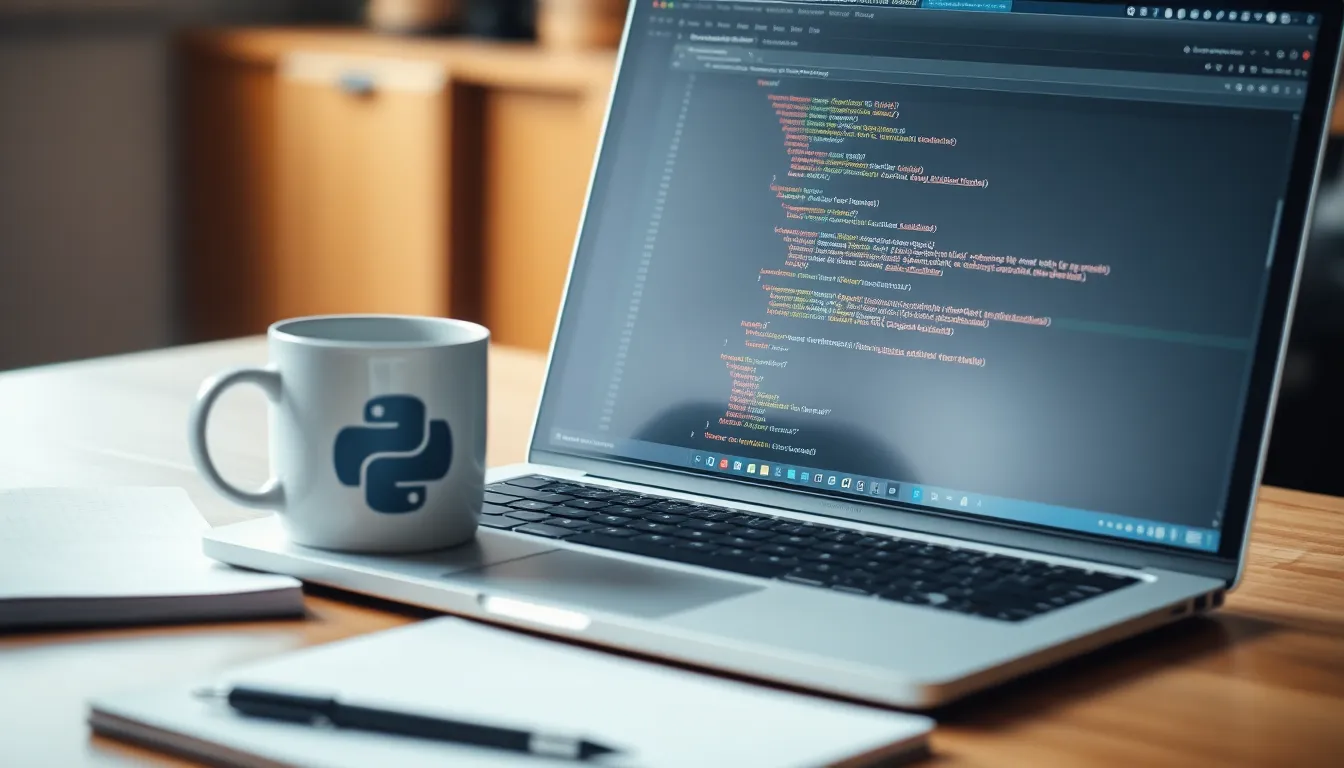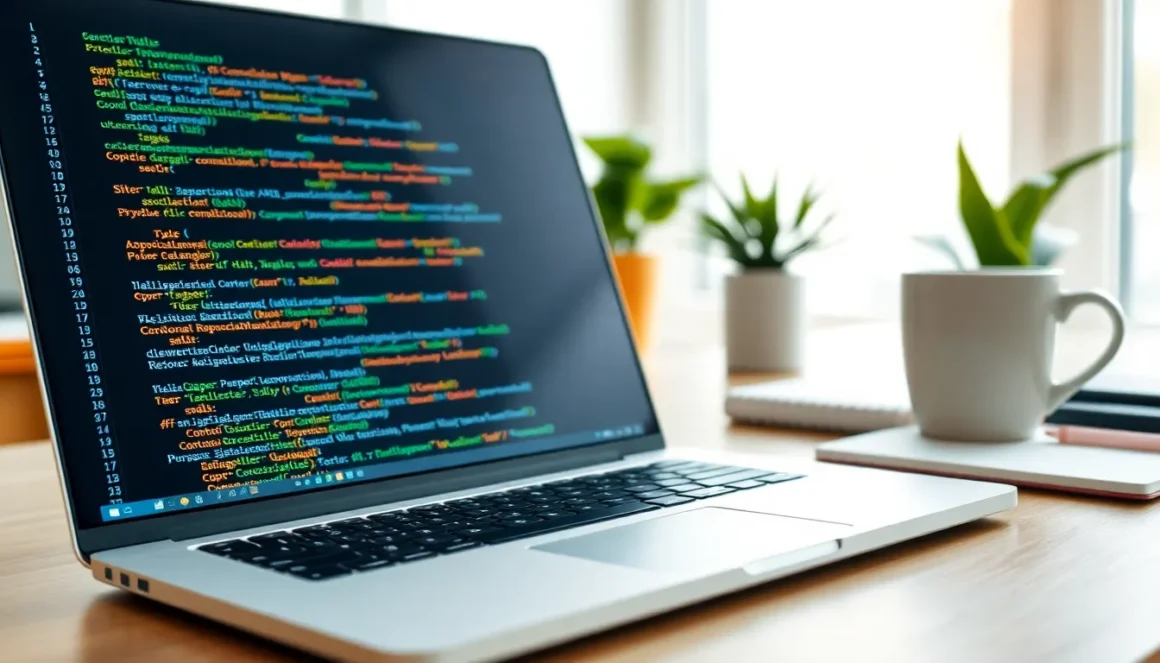In the world of programming, understanding how specific code snippets function can unlock new possibilities. The 2579xao6 Python code presents a unique case that many developers encounter. This code not only serves a specific purpose but also showcases the intricacies of Python programming. Running this code involves a series of steps that highlight key concepts in Python, such as syntax, data structures, and execution flow. By breaking down the process, developers can gain insights into efficient coding practices and troubleshooting techniques. Whether you’re a seasoned programmer or just starting out, exploring how 2579xao6 operates will enhance your coding skills and deepen your understanding of Python.
How 2579xao6 Python Code Is Run
The 2579xao6 Python code serves as an instructional example, highlighting essential programming concepts. It demonstrates syntax, data structures, and execution flow crucial for effective coding.Code Structure
-
- Defines functions that encapsulate specific tasks, promoting modularity.
-
- Utilizes variables to store and manipulate data, enhancing readability and maintainability.
-
- Employs conditional statements to control the execution path based on specific criteria, enabling dynamic responses.
Data Handling
-
- Includes lists and dictionaries for efficient data organization.
-
- Implements loops for iterating over data collections, optimizing performance.
-
- Incorporates error handling to manage exceptions, ensuring robustness and reliability.
Execution Flow
-
- Starts with a main function that orchestrates the program’s activities.
-
- Calls other defined functions to accomplish tasks sequentially, simplifying complex operations.
-
- Utilizes comments to explain code sections, making it accessible for learners.
Best Practices
-
- Follows naming conventions for variables and functions to improve clarity.
-
- Incorporates code reuse through function definitions, reducing redundancy.
-
- Adopts consistent indentation and formatting to enhance visual structure.
Understanding Python Code Execution

The Python Interpreter
The Python interpreter executes Python scripts line by line. Each statement undergoes parsing, where the interpreter checks syntax and converts the code into an intermediary format. Common implementations include CPython, which compiles Python code to bytecode, and Jython, which compiles to Java bytecode. This execution method allows developers to test changes quickly, facilitating a dynamic programming environment. Error handling occurs immediately during execution, making debugging more straightforward.Bytecode Compilation Process
The bytecode compilation process involves converting high-level Python source code into bytecode, a lower-level representation that the Python virtual machine executes. When a Python script runs, the compiler generates these bytecode instructions, which are stored in.pyc files for optimization. This caching mechanism speeds up future executions by avoiding redundant compilation. Each bytecode instruction executes within a virtual machine, translating high-level operations into machine-level instructions that the host platform understands. Optimizing bytecode can lead to enhanced performance, ensuring efficient execution paths for developers.
Running the 2579xao6 Code
Running the 2579xao6 Python code requires a structured approach to ensure an efficient learning experience. This section outlines the necessary environment setup and how to execute the code effectively.Environment Setup
Setting up the environment involves installing Python and necessary packages.-
- Install Python: Download and install the latest version of Python from the official website. Ensure that the installation includes pip, the package installer.
-
- Create a Virtual Environment: Use the command
python -m venv myenvto create an isolated environment. Activate it with the appropriate command for your system:
- Create a Virtual Environment: Use the command
-
- Windows:
myenv\Scripts\activate
- Windows:
-
- Mac/Linux:
source myenv/bin/activate
- Mac/Linux:
-
- Install Dependencies: Use pip to install any required libraries by running
pip install -r requirements.txt, if a requirements file is available.
- Install Dependencies: Use pip to install any required libraries by running
-
- Set Up an IDE: Choose a suitable Integrated Development Environment (IDE) like PyCharm, Visual Studio Code, or Jupyter Notebook for optimal code editing and execution.
Executing the Code
Executing the code involves several straightforward steps.-
- Open the IDE: Launch the chosen IDE and navigate to the project folder containing the 2579xao6 code.
-
- Load the Code: Open the Python file (e.g.,
2579xao6.py) containing the code snippet.
- Load the Code: Open the Python file (e.g.,
-
- Run the Code: Execute the code using the IDE’s run feature or by entering this command in the terminal:
python 2579xao6.py.
- Run the Code: Execute the code using the IDE’s run feature or by entering this command in the terminal:
-
- Monitor Output: Check the output in the console to see the results of the code execution. If there are any errors, the console will display the error messages, aiding in troubleshooting.
-
- Debugging: Utilize debugging tools within the IDE to step through the code, identify issues, and enhance understanding of the code flow.
Common Issues and Troubleshooting
Running the 2579xao6 Python code may sometimes lead to various issues. Identifying these problems quickly can help optimize the coding experience.Syntax Errors
Syntax errors arise from typing mistakes in the code. These errors often indicate missing punctuation or incorrect indentation. To troubleshoot, carefully review the error message provided by the interpreter. It typically points to the specific line where the problem exists. Ensuring all brackets, commas, and colons are correctly placed resolves most syntax issues.Runtime Errors
Runtime errors occur during execution, often caused by invalid operations like dividing by zero or accessing out-of-range indices in lists or dictionaries. Debugging tools in IDEs can help track down these errors. Adding print statements at key points in the code also assists in isolating the problem area.Import Errors
Import errors may prevent the code from running due to missing modules or incorrect module paths. Verifying that all necessary libraries are installed and accessible within the environment resolves these issues. Using the commandpip list confirms installed packages.

